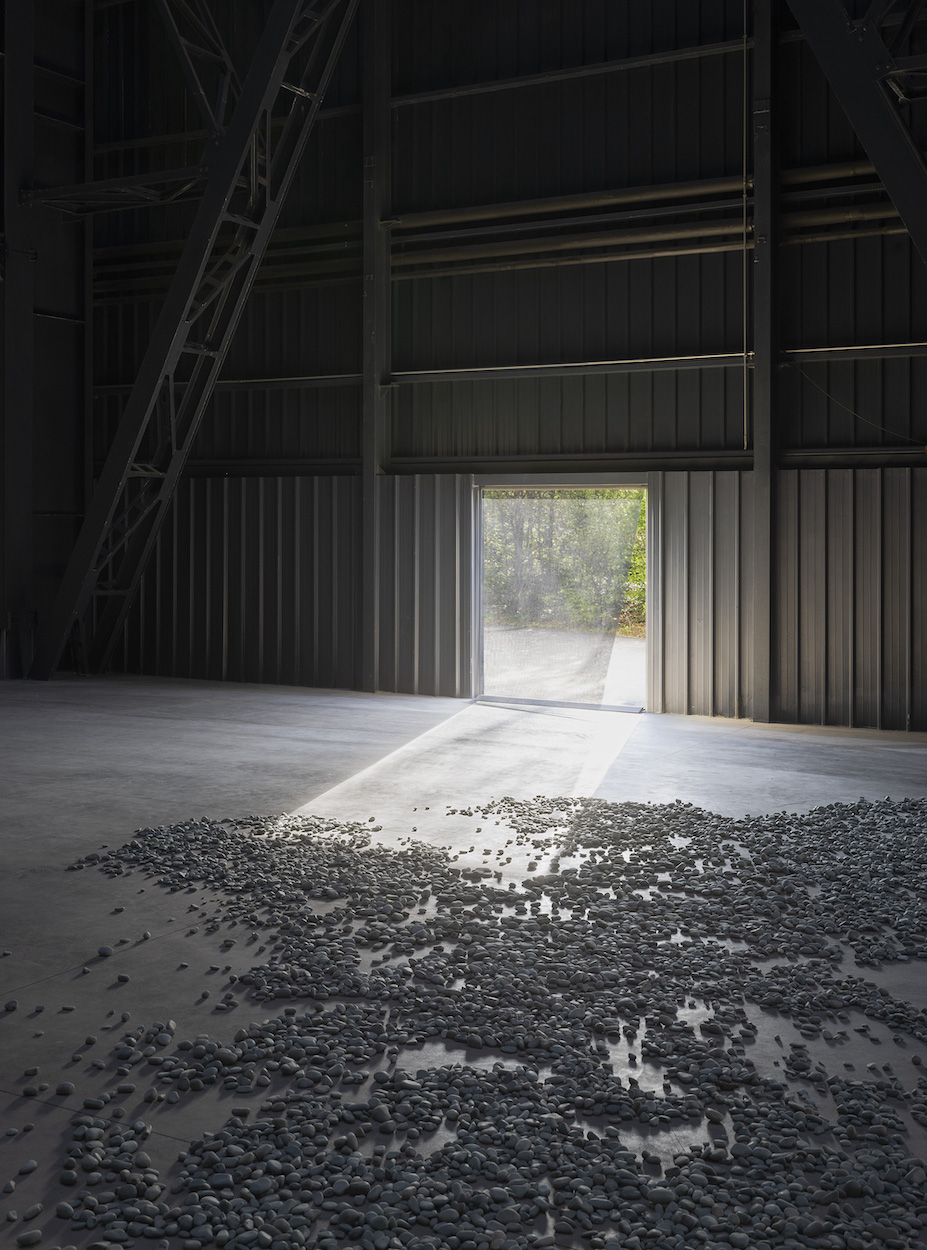“We have to be open to the unexpected” – In conversation with curator Roberta Tenconi
Credits
INTERVIEW Marcus BoxlerIMAGES Pirelli HangarBicocca
Delve into the intellectual landscape of Roberta Tenconi, the visionary Chief Curator at Pirelli HangarBicocca, as she navigates the intricate dance between art, politics, and space. In this candid conversation with Marcus Boxler, Tenconi unveils the alchemy behind curating in one of Europe’s most transformative art spaces.
Marcus Boxler: You have worked with a list of various artists such as Maurizio Cattelan, Cerith Wyn Evans, Laure Provoust, Giorgio Andreotta Calò and many others. How would you describe your curatorial interest and approach?
Roberta Teconi: Any curatorial endeavor I undertake begins in a dialogue – primarily with artists, but also influenced by the space and time we’re in. Situated in the monumental architecture of Pirelli HangarBicocca in Milan, this unique venue exerts a strong influence on my artist selection. There’s no prescriptive rule; it’s a nuanced interplay of personal preferences and the artist’s capacity to unsettle and enlighten the public. Artists serve as unique antennas, foreseeing and illuminating what we often overlook, thereby making us perceive the world anew. Their work often resonates with a political timbre, touching on urgent societal issues like climate change, yet without being overtly political.
M.B: What sets apart an exhibition space like Pirelli HangarBicocca from a typical white cube?
R.T: Pirelli HangarBicocca is a living tapestry of Milan’s history. It began as a 15th-century leisure area, transformed into one of Europe’s industrial giants, and now serves as a cultural cornerstone. When La Scala was closed, the city’s cultural programming took place here. Artists have engaged with this rich history, making each exhibition a dialogue between the artist, the space, and Milan itself. Ann Veronica Janssen, for instance, put the emphasis on light and somewhat neglected the space, while putting an inner spotlight on it at the same time.
M.B: Is every exhibition at Pirelli HangarBicocca immersive?
R.T: The term ‘immersive’ was overused in the recent past, but our exhibitions offer a multi-layered journey. Artists like NEÏL BELOUFA have created spaces that unfold into smaller, intricate encounters as you explore, allowing you to create your own narrative within the space.
M.B: How do you balance promoting emerging artists with market and public expectations?
R.T: Our approach is multi-faceted and deeply rooted in the belief that art should challenge and enrich, rather than conform to market trends or public expectations. We have two galleries, and our smaller space, the Shed, is dedicated to showcasing emerging artists. We don’t let the art market dictate our choices. Instead, we focus on monographic exhibitions that offer a comprehensive view of an artist’s work. Our programming aims to provide a balanced experience that spans diverse media, languages, and geographies. We are not just meeting expectations; we’re setting out to defy them, to offer transformative experiences that can change the way people see the world.
M.B: What is the role of private companies like Pirelli in Milan’s art scene?
R.T: It became almost like a tradition to talk about this topic. In Milan, private patronage has historically played a pivotal role in shaping the cultural landscape. Companies like Pirelli have been instrumental in this, stepping in to fill the void left by the absence of public contemporary art museums. This has created a vibrant, collaborative ecosystem that’s agile and responsive to the needs of the city and its people. The dialogue between private institutions in Milan is strong, and the city has become a magnet for international museum professionals, curators, and artists, thanks to the diverse experiences offered by foundations like ours.
M.B: Milan, especially in terms of the closeness of the private sector and the art world, has somewhat of a pioneering role when it comes to blending arts with fashion, music, performance. Everything you just mentioned.
R.T: …and design! Milan has always been a melting pot of creativity, where the lines between art, fashion, music, and design are not just blurred but actively intertwined. This summer, for instance, we hosted a music festival in collaboration with several non-profit organizations related to music, theater, and performance. We also had a dance collaboration within the exhibition of an artist, creating a multi-disciplinary experience.
M.B: We talked about contemporary society and how art reacts to it. Let us take a little speculative look into what is ahead of us: How do you see the future of curatorial practice with emerging technologies like AI?
R.T: The future is an open book, and it is crucial for us to be both curious and receptive. Artists like NEÏL BELOUFA have already pushed the boundaries by incorporating digital spaces and NFTs into their exhibitions, even before these technologies became mainstream. This willingness to explore and adapt is what will guide us into the future. We have to be open to the unexpected, to the disruptive technologies that challenge our understanding of what art can be. Artists have always been visionaries, and we should trust them to lead us through new technological landscapes without fear.










